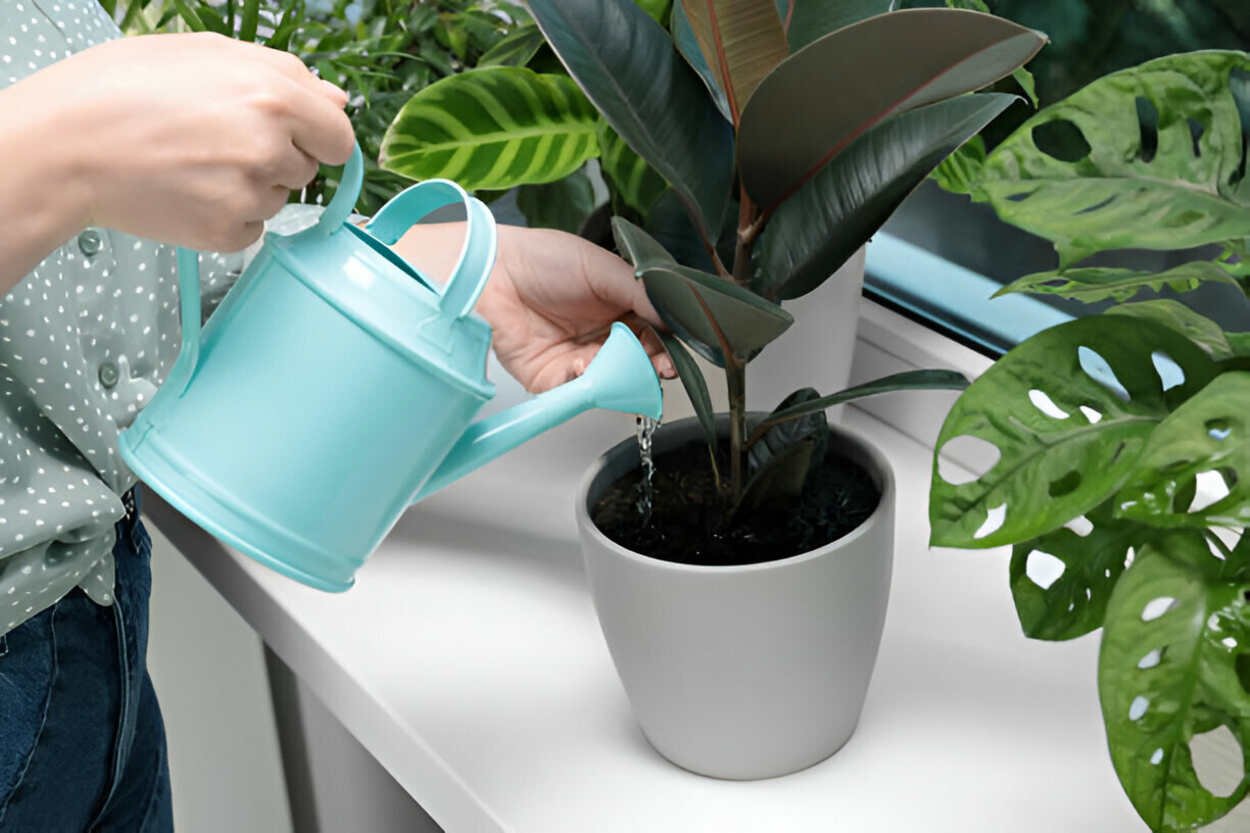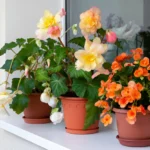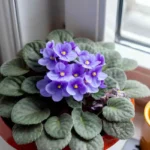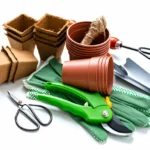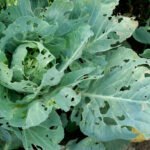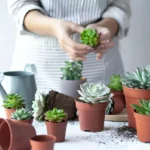Overwatering may cause your plant to die
Before bringing a plant home, you must know its care, location, and environment. Otherwise, you may lose your favorite tree like I did. For those new to gardening who lack experience watering their plants, overwatering can quickly kill them. You should water the plant at the right time according to soil moisture. The most effective method is to water plants according to their species, location, and season. Many people mistakenly believe that plants need to be watered daily. Many of us water the plants when we remember to, so you don’t even know how you are killing your beloved plant.
Results of Overwatering Plants
If the plant is overwatered, the leaves may turn pale and yellow. Overwatering can also cause root rot.
Brown leaves and leaf drips are the result of overwatering. Due to excess watering, the soil is attacked by rot. Excessive watering leads to excess moisture in the soil and the emergence of some harmful insects.
Plants droop if overwatered. Root rot, which turns the roots black, occurs.
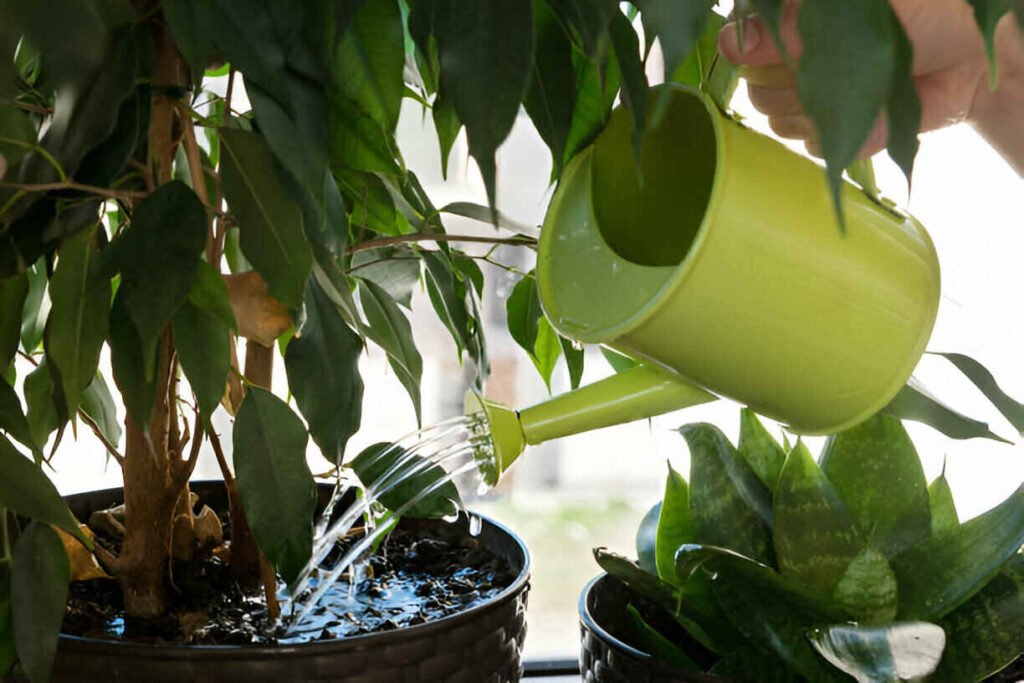
What amount of water should be given to the plants?
Before watering the tree, you need to decide: “You can’t water a plant as you like; a plant must be watered according to its need.” In short, watering the plant according to the soil’s moisture at a particular time is wise.
If the indoor plant is set up in a tub, feel the moisture of the soil by putting your finger up to 2 inches into the soil to see if it is wet. If it is moist, wait until it dries; if it is not damp, you can water it.
Water your outdoor or backyard plants according to the weather and humidity. If a shed or greenhouse is outdoors, you will maintain the water according to the soil moisture. While watering the plants in the tub, remember that the water comes out through the drainage holes.
This indoor plant requires separate care because of its unique characteristics and shape. Some plants need more light, and some need less light.
How much water should be given to any feet, or how often?
Many planter tubs or planters are available on the market or in online stores. They are ideal for planting trees and for providing water. Tubs made of plastic, ceramic, steel, grow bags, terracotta, cement, and more are available.
Most gardeners prefer ceramic tubs, plastic tubs, and grow bags. Water must be given in these tubs according to the rules. If you use plastic tubs to water plants, they won’t absorb water due to their plastic material. However, if you’re using ceramic tubs that don’t have holes, you must be careful when watering the plants.
If you add too much water to these tubs, the water will accumulate, and the plant’s roots may die due to the lack of drainage. I have a helpful tip for you. If you have a ceramic plant pot, I recommend getting a slightly smaller plastic pot. Plant your plant in the plastic pot and then place it inside the ceramic pot. This way, any excess water can drain through the drainage holes and collect in the ceramic pot, which you can dispose of.
Plants in terracotta and cement pots absorb more water, so you may need to water them more frequently than plastic pots. Always check the soil moisture level before watering your plants.
Generally, for indoor plants, you can check the soil and water every 7-10 days.
For some indoor plants, this period may be extended more, maybe once every 15 to 20 days. You water the outdoor plants every 2 to 5 days. The soil should be tested before watering the plants through the humidity meter.
Using a moisture meter, you can easily determine which plants you should water, which ones have dry soil, and which ones have moist soil. Insert the meter’s steel handle into the soil and check it the same way around the tub; you will quickly get an idea of the soil moisture.
Just like the human body has lungs for breathing, plants also have lungs. Can you remember what it says about plants having lungs? I would say yes. The lungs of the plant are the roots of the plant. Roots absorb ions and food from the soil through the roots. Roots move the soil according to their needs and ensure aeration. When you overwater the plant or the soil is too wet, the roots are prevented from taking in ions, which causes extensive damage to the plant roots, and the soil thickens to keep the food intake process going.

How do we recover plants damaged by excess water?
When you realize that your plant is dying due to overwatering, you should try to save it as soon as possible. The first thing you will do is remove the tree from the ground; repotting is required.
The plant should be carefully pulled out while separating the wet soil so as not to damage the roots. You will then take your Singh and wash and clean the tree’s roots thoroughly. Once cleaned, see if any roots have turned black, then cut them off with scissors and apply an advanced fungicide if possible.
To dry the wet roots quickly, place the plant on paper, as the paper absorbs water quickly. Check the plant for wetness. When completely dry, transplant it into a new tub and media.
This way, you can save your tree. Above all, the plant should be given only a little water. You have to water the plants according to their needs. May your favorite plants be well.
Happy gardening
